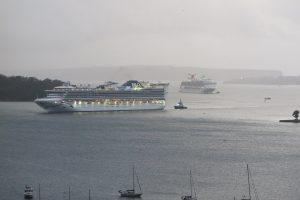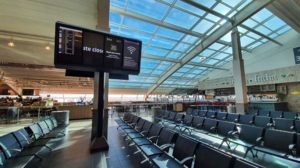Service and shipment logistics typically gets raised as an issue when going over strategies to make metropolitan locations more secure for strolling and biking. We wish to decrease the existence of lorries in neighborhood centres and areas, however how can we attend to services and shipments that come over truck, van and cars and truck?
Stores’ requires for shipments vary. Some just require when- or twice-a-week restocking. Some dining establishments may handle with a couple of arranged shipments of fresh produce every day. Other shops may require regular or emergency situation top-ups of products throughout the day. Services can imply anything from tradespeople to emergency situation service like fire and ambulance.
The city has lots of roadway users whose task includes numerous journeys in between various locations. It is undoubtedly crucial that they have the ability to get where they require to go rapidly and effectively. For much of these services and shipments, they and business they service like access to be as near the location– the shopfront, the grocery store packing bay, the dining establishment back entrance– as possible. For a tradesperson, their automobile is their tool shed, so having the ability to park it near the task suggests prepared access to the devices they require to work. Emergency services require unobstructed access to the emergency situation they are going to.
All of this can make it seem like yet another factor that lorries require to gain access to every shop, at all times, so that companies can keep running. But in a city that’s attempting to end up being more secure and more available to all, and in a warming environment which requires decrease of VKT, maybe there are much better methods to handle services and shipments.
The lorries
There are many various examples of electrical freight bikes. The family-wagon freight bike with a barrow in the front that fits a number of little kids is ending up being more typical on Auckland streets. Beyond New Zealand, the freight bike market remains in growth mode. A BloombergCity Laboratory post growing of the electrical shipment bike discovers that the development has actually been especially strong in Europe:
InGermany, DHL/DeutschePost now handles a fleet of almost 17,000 freight bikes and trikes, with another 5,000 on order “The change in the last five years here has been extraordinary,” states Kevin Mayne, CEO of Cycling Industries Europe, a market group. “Most of the cargo bike manufacturers now have two divisions: one for consumers and one for businesses. If anything, growth in the business-to-business side is bigger.”
Front- barrow carrier bikes are reasonably typical, utilized by DHL, Fedex and others to get mail to locations rapidly. They’re not the supreme heavy-haulers (see listed below), however they’re quick, active and effective.

This design of shipment bike is currently running in New Zealand: UrgentCouriers have actually simply released 5 comparable bikes on the streets of Auckland.
Slick variations like the Sunrider freight bike mix storage with solar energy innovation to develop something really futuristic.
InParis, bikes are utilized to pull trailers of groceries in between the storage facility and Carrefour grocery stores lot of times each day.
“Paris is doing the modal shift. The supply of supermarkets takes place with these carts. They ride 10 to 50 times between warehouse and shop, electrically assisted.” #cargobike https://t.co/8OKgkzQtDo
— Bicycle Mayor of Bath (@SaskiaHeijltjes) August25, 2021
Articulated trailer systems can offer bikes severe bring capability– a few of these competitor a decent-sized van.
Bikes are likewise being become specialised shipment lorries for medical functions. A good friend of GA found a ‘Corona Bike’ in Berlin, among 10 super-mobile screening centres presented in the city.
Paris’ emergency situation medical bikes have actually been established to cut through traffic and get immediate medical materials to medical facilities and clients.
It’s not simply shipments that e-cargo bikes work for. Wellington has a biking electrical contractor who navigates by bike with his tools customized steel pannier accessories. TheGerman variation of the AA has mechanics on e-bikes with tools in the trailer.
LosAngeles has a biking paramedic who utilizes a kitted-out bike to get to medical emergency situations in tight locations.
The last mile
Creating mode shift in the services and shipments sector is everything about the last mile. The last mile idea is an entirely various method of considering shipment and logistics. It identifies that our towns and cities need to be people-first, which lorries should add to making the locations we reside in more secure and much easier to navigate.
What does this imply?
- Instead of one huge automobile finishing the whole journey from origin to supreme location, numerous little lorries (like freight bikes) travel in between an intermediate collection point and last locations, lot of times each day.
- Instead of carrier vans doing circuits in between spread-out companies, e-cargo bikes make fast direct journeys within an area.
- Instead of driving fars away in between call-outs, a tradie on a bike works within a cycleable radius, and does not get stuck in traffic en route to a task.
- Operations that need larger lorries and facilities are handled so that they take place late during the night or early in the early morning, when they’re not going to interfere with regular everyday activities.
Creating the last-mile facilities
InBerlin, the Senate is taking a look at including freight carriages to the S-Bahn, the metropolitan city system. As this post notes, that job is not without logistical headaches.
For the logisticians, the extra intermediate phase through regional rail transportation would make it a lot more made complex with extra packing procedures. How the arrangements in between business and transportation business can be structured in a significant method likewise appears definitely open.
I n Frankfurt, work is underway to evaluate the capacity of the city’s metropolitan cable cars– yes, its light rail– to be part of a shipment logistics network. The idea was revealed at a ‘National Bicycle Logistics’ conference in September.
The containers with a capability of 2.1 cubic meters and a length of 1.7 meters suit the multi-purpose location of cable cars. Where otherwise prams are parked, the containers the size of Euro pallets might quickly discover their location rather. After transportation by cable car, the containers on rollers need to be gotten by a freight bike carrier at the normal stopping points. The bicyclists can then perform to business or families.
Cargo bikes are supplying last-mile shipments in the Canadian cities of Montreal and Toronto One of the leaders, Project Colibri in Montreal, utilizes an old bus depot as a loading and circulation center.
Hubs, such as the one utilized in Project Colibri, are likewise “critical” facilities, [cycle logistics consultant] Sam Starr stated, and need collaborations in between federal governments and companies.
“It can’t just be done by the private industry,” he stated. “It really needs public collaboration.”
InPortland, Oregon, ‘micro-delivery hubs’ might be openly moneyed under a federalCovid- relief fund. The idea has a network of pickup/dropoff points on the ‘Green Loop’, from which last-mile shipments would start.
Familiar barriers
European cities are accepting e-cargo logistics due to the fact that they are typically currently dealing with years’ worth of financial investment in biking facilities. When biking is the simplest method to navigate, it simply makes good sense to run a service by bike too.
On the other hand, car-dominant North American cities are dealing with the exact same type of difficulties that Auckland is taking a look at. TheBloomberg City Laboratory post referenced above highlights the spectrum of facilities required to support a mode-shift for services and shipments, from the physical area, to the charging facilities, to the software application business utilize to prepare journeys:
The other pushing infrastructural concern is the absence of U.S. “microhubs”– physical areas where carriers can combine lorries and parcels. “You need charging infrastructure and overnight storage for the bike,” Dalla Chiara states, “as well as space for a van to deliver packages to the microhub in the morning.” Inertia preferring the status quo of van shipment likewise provides an obstacle. “The big shippers are running software that isn’t designed for cargo bikes,” Dalla Chiara states. “It doesn’t take into account the presence of bike lanes or the steepness of the road.”
A pilot job in Seattle discovered that changing shipment vans with freight bikes within one area decreased the general emissions of shipments by 30%, however that insufficient facilities made the bike carriers’ tasks harder.
Improved bike lanes might assist, though Goodchild includes that in a lot of cities, the bike system has actually been created for commuters, therefore may not be open to freight bikes that need to make regular stops.
Businesses will react to the context they are provided. In Auckland, the City Centre Master Plan intends to make the City Centre a ‘zero-emissions area’ This suggests making it harder to drive a vehicle into and through the CityCentre Each of Urgent Couriers’ 5 ebikes is changing a vehicle, due to the fact that they had actually discovered that traffic and decreased packing zones were making the vehicles unviable.
Bikes are currently appearing like the much better alternative for some companies, which lacks any genuine last-mile facilities or a real cycle lane network.
Businesses that run services and shipments will react to the context they’re supplied. Getting the metropolitan locations we desire has to do with constructing the facilities they need and after that stepping aside so that companies can adjust and innovate. It’s occurring all over the world: we can ask, obtain and take concepts from all sorts of locations. All we require to do is get on the (freight) wagon.
Share this
Source link .









